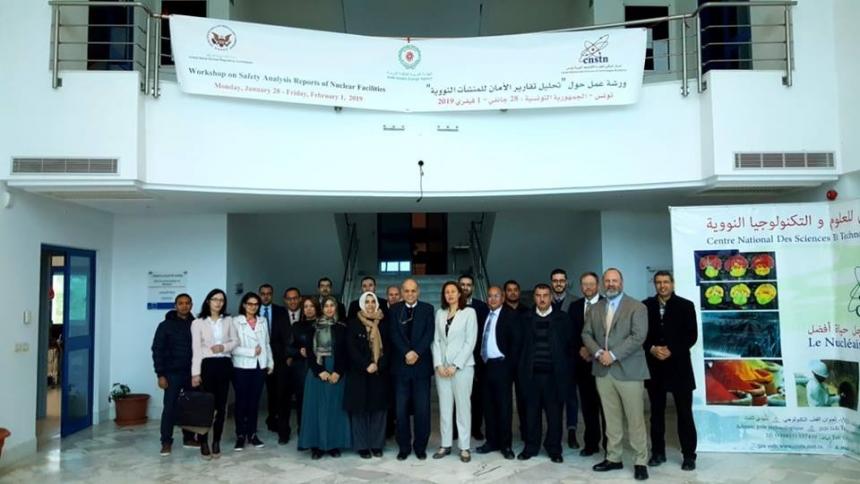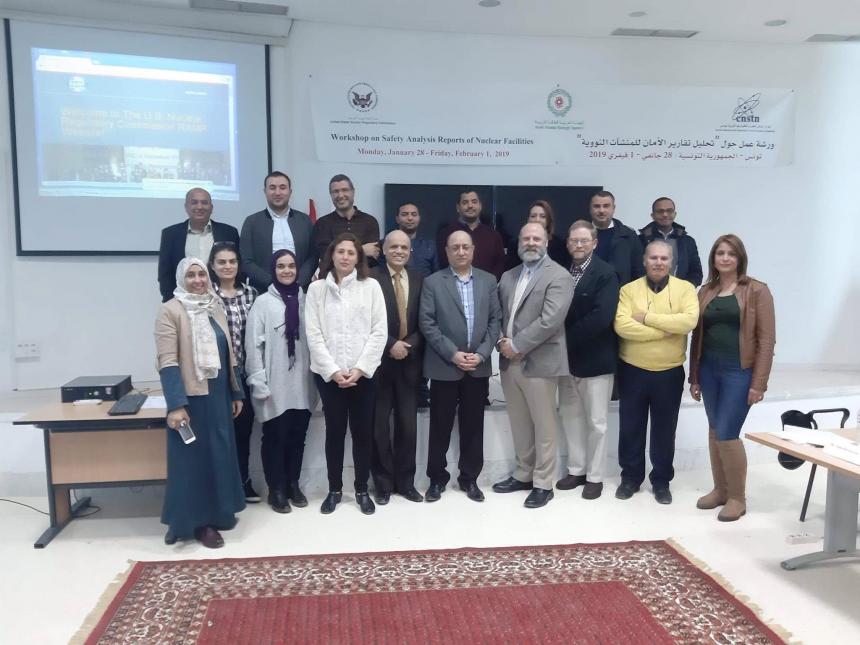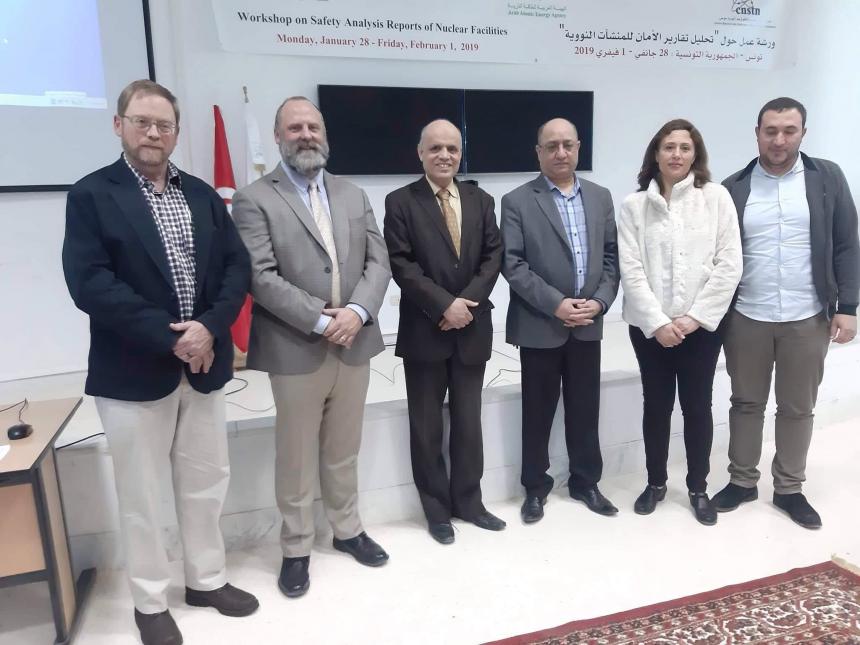


From January 28 through February 1, 2019, the U.S. Nuclear Regulatory Commission’s (NRC) International Regulatory Development Partnership (IRDP) supported a workshop on “Safety Analysis Reports (SARs) for Research and Test Reactors” in Tunis, Tunisia. The workshop was hosted by the Tunisian National Center for Nuclear Science and Technology (CNSTN), in collaboration with the Arab Atomic Energy Agency (AAEA). Participants from Egypt, Jordan, Libya, and Tunisia were in attendance.
IRDP instructors Dr. Steven Reese and Mr. Rich Holm provided the participants a practical application of the NRC’s guidance in NUREG-1537, Guidelines for Preparing and Reviewing Applications for the License of Non-Power Reactors. NUREG-1537 includes guidance on the format and content of SARs for Research and Test (RTR) reactors as well as how to review such documents. The participants were provided the opportunity to perform a detailed review of select portions of NUREG-1537, then compare the guidance against an actual Preliminary SAR that was submitted in the United States; this included review of the SAR’s associated reactor license and technical specifications.
Classroom instruction was supplemented with an exercise to aid in the understanding of how to review RTR SARs. The exercise divided the workshop participants into three groups, each representing a regulatory body that just received a hypothetical SAR from a sub-critical assembly, a 1 MW RTR, and a 10 MW RTR. The exercise demonstrated how to use a risk-informed approach to anticipate the kinds of engineered safety features that the licensee might include in the hypothetical application. Each group prepared a short presentation that they presented on the last day of the workshop. At the conclusion of each presentation, a discussion ensued on the types of engineered safety features one might expect and how it related to the other two RTRs. Participants held lively discussions and articulated the relative need for such systems and how such systems would be incorporated into the technical specifications.
The participants noted how the format and content of NUREG-1537, Vol 1, differed only slightly from the recommendations in IAEA Safety Standards Series SSG-20, and that they found significant value in the discussions about NRC review protocols for RTRs (NUREG-1537, Vol 2). The participants were highly engaged, asked probing questions throughout the week, and provided insightful comments to the technical discussions.
